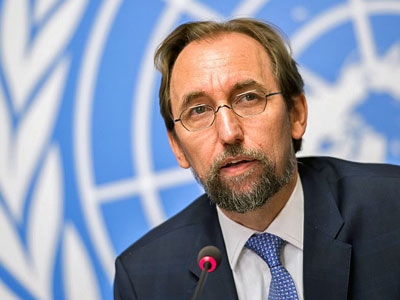




Myanmar security forces burned Rohingya Muslim villages in northern Rakhine state after the government signed an agreement with neighboring Bangladesh on repatriating refugees who fled earlier waves of repression, an international human rights group said on Monday.
New York-based Human Rights Watch (HRW) said new satellite images show that 40 Rohingya villages have been destroyed by fire since October and November in northern Rakhine, where a brutal army crackdown has left thousands dead and driven roughly 650,000 others across the border to live in sprawling refugee camps.
During this time, Myanmar was in talks with Bangladesh about plans to return the Rohingya refugees, and the two countries signed an agreement on Nov. 23 to allow those who wished to return to Myanmar to do so if they could prove prior residency.
The identification of 40 new burned villages increases to 354 the total number of Rohingya communities that were partially or fully destroyed by the violence since Aug. 25, when the crackdown began following deadly attacks on police outposts by a Muslim militant group, HRW said, with dozens of buildings later torched the same week that the repatriation agreement was signed.
“The Burmese army’s destruction of Rohingya villages within days of signing a refugee repatriation agreement with Bangladesh shows that commitments to safe returns were just a public relations stunt,” said Brad Adams, HRW’s Asia director.
“The satellite imagery shows what the Burmese army denies: that Rohingya villages continue to be destroyed,” he said. “Burmese government pledges to ensure the safety of returning Rohingya cannot be taken seriously.”
The rights group has used satellite imagery to monitor more than 1,000 villages and towns in Maungdaw, Buthidaung, and Rathedaung townships where the crackdown took place.
HRW noted that 118 of the 354 affected villages were either partially or completely destroyed after Sept. 5, the day on which Aung San Suu Kyi’s office said military “clearance operations” had ended.
Of the 40 recently burned villages, 24 were destroyed in October, 11 in November, and five over both months, HRW said.
Rights groups, including HRW, have criticized the agreement for not including the United Nations in the repatriation plans, for an unrealistic timetable for voluntary returns to begin on Jan. 22, and for continued discrimination against the Rohingya, who are considered by Myanmar to be illegal immigrants from Bangladesh and are denied citizenship and access to basic services.
During the crackdown following the Aug. 25 militant attacks and a second one after smaller-scale ambushes by the same group on Oct. 9, 2016, the Myanmar military conducted “clearance operations” that included indiscriminate killings of Rohingya, torture, rape, and arson.
Geneva-based Doctors Without Borders (MSF) issued a report on Dec. 14 saying that at least 6,700 Rohingya were killed during the first month of the crackdown that began in late August, including many who were shot, burned inside their homes, and beaten to death.
The figure includes 730 children under the age of five who died.
Rights groups, the United Nations, and the United States have said the military's actions against the Rohingya amount to ethnic cleansing.

The report of new satellite imagery showing additional destruction comes as Zeid Ra'ad Al Hussein, U.N. high commissioner for human rights, said it would not surprise him if a court ruled that acts of genocide had been committed against the Rohingya.
“The elements suggest you cannot rule out the possibility that acts of genocide have been committed,” Reuters quoted him as saying, according to an interview with the BBC.
“It’s very hard to establish because the thresholds are high,” Zeid said. “But it wouldn’t surprise me in the future if the court were to make such a finding on the basis of what we see.”
Zeid also said that attacks on the Rohingya had been “well thought out and planned,” and he urged State Counselor Aung San Suu Kyi, Myanmar’s de facto leader, to do more to stop the violence by the military, according to the Reuters report.
“I spoke to her on the phone, and I appealed to her to bring these military operations to an end, and to my great regret, it didn’t seem to happen,” he said, according to an excerpt from the interview.
Though Aung San Suu Kyi agreed that the situation was “awful,” a few days later her government began to question the U.N.’s methodology regarding the situation, he said.
Zeid called the violence “a textbook example of ethnic cleansing” in a speech to the U.N. Human Rights Council in Geneva, Sept. 11.
The Myanmar government and armed forces have denied that atrocities have been committed against the Rohingya and blamed the village burnings and other mayhem on Muslim militants.